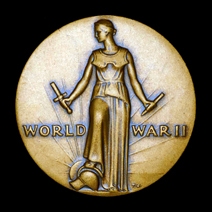 |
416th Bombardment Group (L) 671st Bombardment Squadron (L) Personnel
|
 |
Return to Table of Contents
Squadron Headquarters Personnel

Lt. Col. David L. Willetts, Commander, 671st Bomb Sq.
(photo courtesy of Jim Kerns)

Lt. Col. Lloyd F. Dunn, Commander, 671st Bomb Sq. (May 1945)
receiving birthday cake from officer of the mess [name unknown] (Photo Courtesy of Jim Kerns)

Major Leland C. Nielsen, 671st Bomb Sq. Operations Officer
(photo courtesy of Jim Kerns)

Major C. Gray McCullah
(photo courtesy of Jim Kerns)

Doctor Leland Randles (Flight Surgeon) with Joseph A. May
(photo courtesy of Jim Kerns)

Crew Photos


A-20G "Uncle Bob" at Wethersfield, England on 16 Aug 44, Lt. Francis W. Demand (P) and Lt. William A. Merchant (P)

Lt. Joe Lackovich (P) stands behind Lt. Bob Basnett (BN)
at the entrance to their "improved" quarters at Melun-Villaroche, Fall of 1944 (photo courtesy of Bob Basnett)

Capt. A. H Thiel and F/O Brandt
Here is the American Flight
Officer rank story.
To get an Officer Commission, one must be over 21 years of
age. Before WWII started one had to be
21 to be accepted as an Aviation Cadet. After WWII started they
began to take in cadets at age 18. This meant they would
graduate before they were 21. A new rank was created (similar to
the Army Warrant Officer rank). It was called Flight Officer. The
insignia was a gold bar with blue stripes. The Aviation Cadet
that earned his wings before he was 21 received the Army rank
of Flight Officer. Later there were Staff Sergeant pilots.
They were soldiers who went into pilot training from the Army's
enlisted ranks. The RAF also had a rank called Flight
Officer. It was
an English Commissioned rank similar to our Lieutenant rank. (submitted
by Wayne Downing)

Captain Richard P. Tutt alongside
"near
miss" flak hole in cockpit

Capt.
Burdette "Burt" Parker, Melun, France Fall of 1944 (photo
courtesy of Phil Stanley)